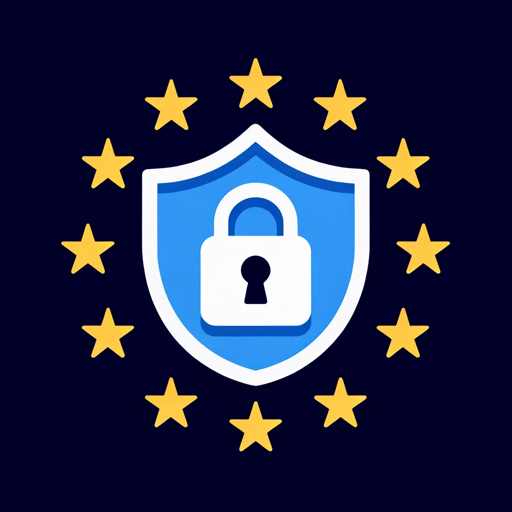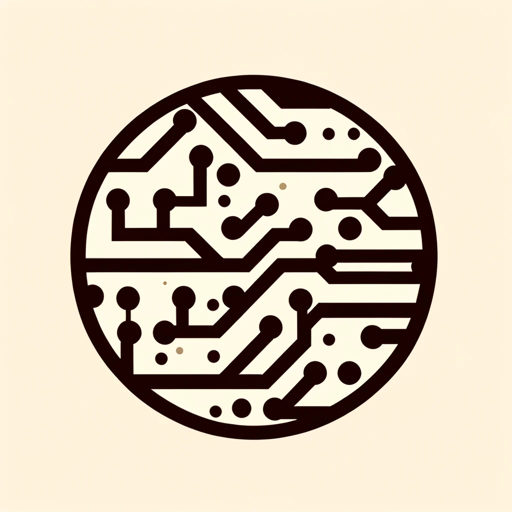RGPD-GDPR compliance assistance tool.
AI-powered GDPR guidance at scale.
Comment respecter le RGPD ?
Puis-je transférer des données à l'international ?
Quels sont les droits des personnes concernées ?
Comment me mettre en conformité RGPD ?
Related Tools
Load More
GPT Jurisprudência - busca de jurisprudência
Este assistente foi especialmente desenvolvido para advogados. Insira o tema da jurisprudência que está buscando, e o assistente irá procurar ementas e artigos nos principais sites de acesso público.

LegalGPT - Especialista em Contratos BR
Especializado em direito contratual brasileiro, projetado para fornecer orientações e informações sobre contratos e legislação pertinente no Brasil. Ele oferece assistência a advogados, estudantes de direito, e profissionais que necessitam de apoio jurídi

GDPR Compliance
Your GDPR guide

GDPR Ready with Generative AI.
Guidelines for GDPR Compliance and Information Privacy Manager.

GDPR Expert
Legal expert on GDPR, providing sophisticated advice to privacy professionals.

Privacy policy and GDPR Assistant
Helps you create privacy policy and GDPR Markdown document for your website!
20.0 / 5 (200 votes)
Introduction to the General Data Protection Regulation (GDPR)
The General Data Protection Regulation (GDPR) is a European Union regulation enacted in 2016 and enforced starting May 2018. Its primary purpose is to strengthen individuals' rights to privacy and protect their personal data across all EU member states. It applies to any organization that processes personal data of EU residents, regardless of the organization’s location. The GDPR focuses on several key principles such as transparency, purpose limitation, data minimization, accuracy, storage limitation, and security. For example, a retail company collecting customer email addresses for a newsletter must clearly explain the purpose of data collection, secure it, and ensure the customer can easily withdraw consent. The regulation mandates that any entity handling such data appoints a Data Protection Officer (DPO) when processing large volumes of sensitive data, ensuring compliance and responding to any breaches. The design of GDPR emphasizes the protection of data subjects' rights, holding organizations accountable for data processing activities. It empowers individuals with rights like data access, rectification, and the 'right to be forgotten.' For instance, an employee can request that their outdated CV be deleted from their employer's system if it is no longer necessary.

Key Functions of GDPR
Data Subject Rights
Example
Right to Access and Right to Erasure
Scenario
A customer can request a copy of all personal data held by an e-commerce platform (right to access). They can also ask for their data to be deleted once their contract is terminated (right to erasure), such as removing purchase history and personal information after they stop using the service.
Data Protection by Design and by Default
Example
Integration of Privacy Measures
Scenario
A software development company implements privacy settings that ensure only essential data is collected and that any unnecessary data is automatically deleted after a short period. For instance, a health app might anonymize user activity logs by default.
Data Breach Notification
Example
Obligatory Breach Reporting
Scenario
An IT service company suffers a cyberattack, compromising customer information. According to GDPR, the company must notify both the data protection authority (CNIL in France) and affected individuals within 72 hours of discovering the breach, ensuring transparency.
Ideal Users of GDPR Services
Small and Medium-Sized Enterprises (SMEs)
SMEs benefit significantly from GDPR guidance, especially in industries that handle personal data such as retail, hospitality, or healthcare. For instance, SMEs can use simplified GDPR checklists to assess their data practices, ensuring customer trust and avoiding hefty fines. Given their limited resources, compliance tools such as CNIL's checklist for SMEs help streamline the process【13†source】.
Human Resource Departments
HR departments in large organizations, whether public or private, deal with vast amounts of personal employee data. They use GDPR services to ensure that recruitment, payroll, and employee management processes comply with GDPR. For example, HR must ensure that sensitive employee data, such as health records or evaluations, are stored securely and only accessed by authorized personnel【14†source】.

Steps to use RGPD
Visit aichatonline.org for a free trial without login, no need for ChatGPT Plus.
Begin by exploring RGPD-related queries on this platform, where you can access all features without any barriers to entry.
Understand your data landscape.
Identify the personal data you handle, its sources, and the processing activities involved (e.g., customer data, employee records). This understanding forms the foundation of any GDPR compliance effort.
Create and maintain a data processing register.
Document your data processing activities, their purpose, and legal basis. This includes categorizing data, setting retention policies, and identifying processors.
Implement necessary security measures.
Ensure that data is protected through technical and organizational measures, such as encryption, regular updates, access control, and periodic audits.
Ensure compliance with individual rights.
Be ready to handle data subjects' rights requests, including access, correction, deletion, and portability of their data. Establish procedures for responding within the mandated timeframe.
Try other advanced and practical GPTs
Tweeter
AI-powered tweet generation for optimized engagement

PósCiênciaDaComputaçãoBR
AI-powered analysis of academic theses.

typst
AI-powered platform for perfect documents

Money Management Mentor
Smart, AI-powered financial advice for everyone.

Experience Cancun Bot
AI-powered guide for Cancun adventures

Fakemon Maker (Essentials)
AI-powered Fakemon creation tool.

EEAT Analyzer
AI-powered content quality assessment tool

Astrolo.GPT
AI-driven tarot and astrological insights

SWOT Analyst
AI-Powered SWOT Analysis for Strategic Insights

Academic Editor
AI-powered academic text enhancement

Trends Advisor
AI-Powered Strategic Marketing Insights

Seabiscuit Accounting CFA Copilot
Your AI Partner in Accounting Excellence

- Compliance Audit
- Data Mapping
- Security Measures
- Employee Data
- Customer Privacy
Five Key Questions and Answers about RGPD
What is the purpose of the GDPR?
The GDPR aims to protect the privacy and personal data of individuals in the EU by regulating how organizations collect, store, and process data. It enhances individuals' rights and imposes stricter requirements on organizations to ensure compliance.
Do small businesses need to comply with the GDPR?
Yes, the GDPR applies to all organizations that process personal data, regardless of size. However, some obligations, like the need for a Data Protection Officer (DPO), may not apply to small businesses unless they process sensitive data at a large scale.
What are the consequences of non-compliance?
Non-compliance can result in fines up to €20 million or 4% of annual global turnover, whichever is higher. Other consequences include reputational damage, loss of customer trust, and possible legal actions by affected individuals.
How can organizations demonstrate GDPR compliance?
Organizations can demonstrate compliance by maintaining an up-to-date data processing register, performing Data Protection Impact Assessments (DPIAs), ensuring proper consent management, and having transparent data protection policies.
What rights do individuals have under the GDPR?
Individuals have the right to access, correct, delete, and port their data. They can also object to processing or request restrictions. Additionally, they must be informed about data breaches that affect them.